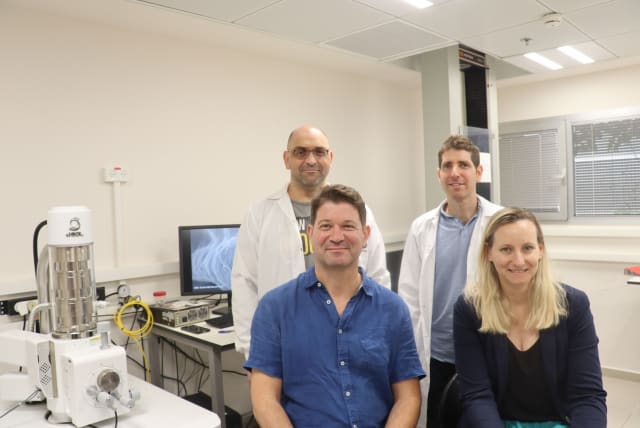TAU team produces 'green' hydrogen with over 90% efficiency

The hope is that in the future, TAU's method could be commercially implemented to lower the cost of green hydrogen production and hence enable its use in more industries and agriculture
A team of researchers from Tel Aviv University has produced "green" hydrogen – hydrogen that is produced without polluting carbon dioxide emissions but is still highly efficient, the university said.
Their research was published in a study in the peer-reviewed Carbon Energy journal.
Today, hydrogen is used in various industrial processes to generate electricity, power vehicles, produce fertilizers, and more. However, 95% of hydrogen is produced from coal or natural gas, emitting nine to 12 tons of CO2 for every ton of hydrogen.
How did Tel Aviv University produce green hydrogen?
The TAU team produced hydrogen using a water-based gel to attach the enzyme to the electrode and a biocatalyst. Over 90% of the electrons introduced into the system were deposited in the hydrogen without any secondary processes.
"Hydrogen is very rare in the atmosphere, although it is produced by enzymes in microscopic organisms, which receive the energy from photosynthesis processes," explained Itzhak Grinberg, a doctoral student who helped lead the project. "In the lab, we 'electrify' those enzymes. That is, an electrode provides the energy instead of the Sun."
However, the challenge is that the enzyme generally "runs away" from the electric charge when making hydrogen in a lab. The hydrogel holds the enzyme in place.
"The material of the gel itself is known, but our innovation is to use it to produce hydrogen," said Prof. Iftach Yacoby of TAU's School of Plant Sciences and Food Security, who oversaw the project. "We soaked the electrode in the gel, which contained an enzyme for producing hydrogen called hydrogenase. The gel holds the enzyme for a long time, even under the electric voltage, and makes it possible to produce hydrogen with great efficiency and at environmental conditions favorable to the enzyme — for example, in salt water, in contrast to electrolysis, which requires distilled water."
The team also tested the gel with two other enzymes and proved that the hydrogenase could attach different enzymes to the electrode.
"Today, 'green' hydrogen is produced primarily through electrolysis, which requires precious and rare metals such as platinum along with water distillation, which makes the green hydrogen up to 15 times more expensive than the polluting 'grey' one," said doctoral student Oren Ben-Zvi, who co-led the experiment.
Therefore, the hope is that in the future, TAU's method could be commercially implemented to lower the cost of green hydrogen production and hence enable its use in more industries and agriculture, thereby reducing CO2 emissions and making the planet healthier.
Moreover, the paper said that the ease of immobilization and mild conditions make TAU's method attractive for various biocatalysts. Therefore it could also be applied in processes not related to electrochemistry.
Prof. Lihi Adler-Abramovich of the School of Dental Medicine and the Center for Nanoscience and Nanotechnology also oversaw the project.
The Environment and Climate Change portal is produced in cooperation with the Goldman Sonnenfeldt School of Sustainability and Climate Change at Ben-Gurion University of the Negev. The Jerusalem Post maintains all editorial decisions related to the content.
Jerusalem Post Store
`; document.getElementById("linkPremium").innerHTML = cont; var divWithLink = document.getElementById("premium-link"); if (divWithLink !== null && divWithLink !== 'undefined') { divWithLink.style.border = "solid 1px #cb0f3e"; divWithLink.style.textAlign = "center"; divWithLink.style.marginBottom = "15px"; divWithLink.style.marginTop = "15px"; divWithLink.style.width = "100%"; divWithLink.style.backgroundColor = "#122952"; divWithLink.style.color = "#ffffff"; divWithLink.style.lineHeight = "1.5"; } } (function (v, i) { });
